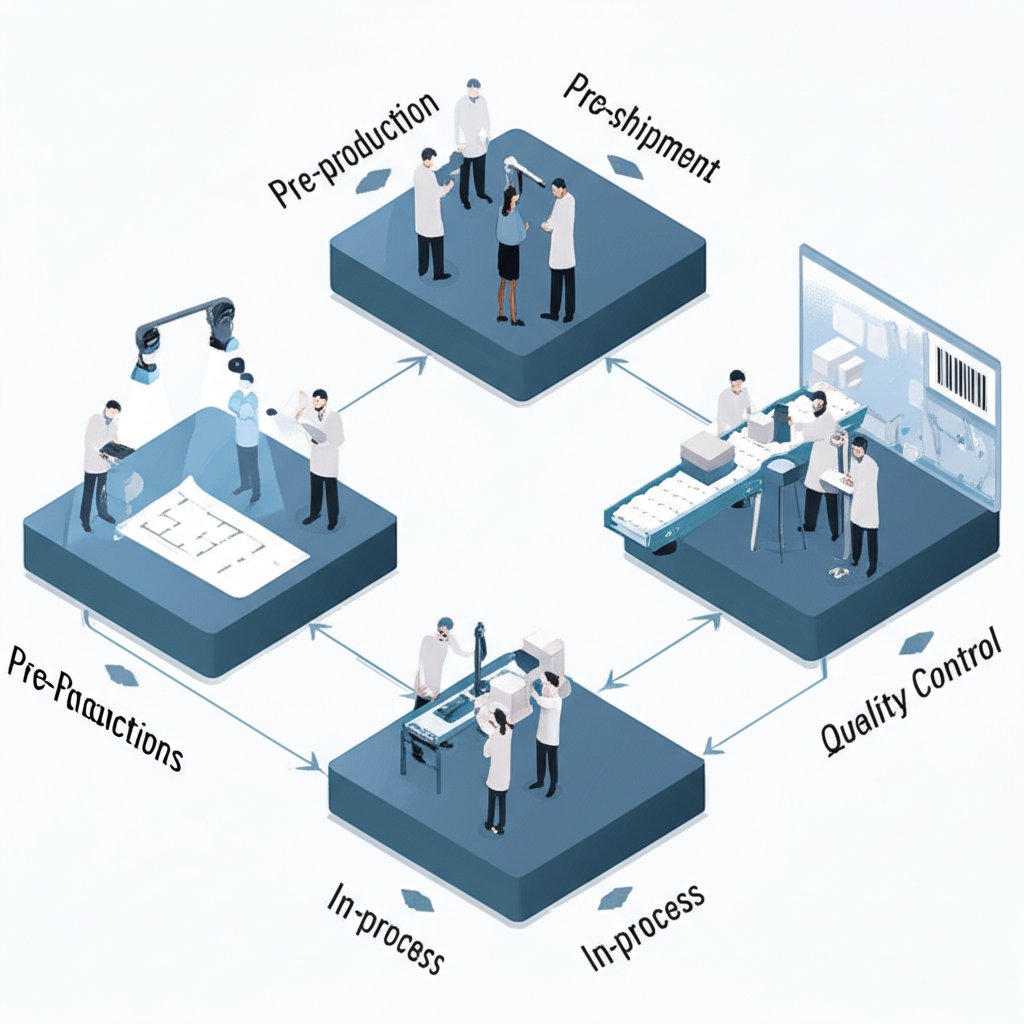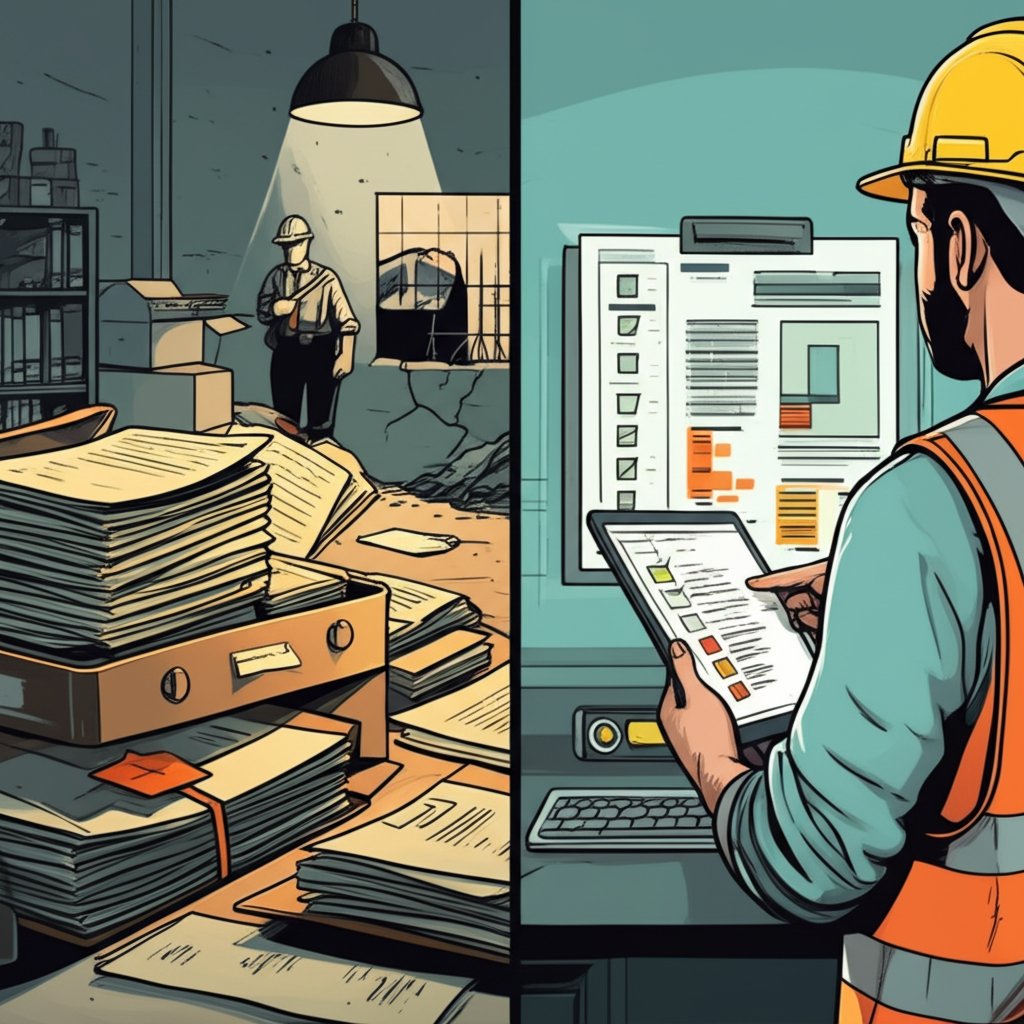
Introduction to Product Inspection China
When you order products from overseas, especially from a vast manufacturing hub like China, you might wonder: How can I be sure what arrives matches my expectations? That’s where product inspection China becomes a crucial part of your sourcing strategy. But what exactly does it mean, and why is it so important?
Product inspection is the systematic process of checking, measuring, and testing a product against agreed-upon specifications and standards before it reaches your hands. In the context of importing from China, this means verifying that each batch of goods meets your quality, safety, and compliance requirements—before shipment and payment are finalized. The process often involves independent quality inspectors who use detailed checklists and sample testing to ensure everything aligns with your expectations.
Why China? The Global Manufacturing Powerhouse
China’s reputation as the world’s factory didn’t happen by accident. With its extensive supply chains, competitive labor costs, and a broad spectrum of manufacturing capabilities—from basic consumer goods to advanced electronics—China attracts businesses of all sizes. You’ll notice that brands like Xiaomi, Haier, and Lenovo have gained international recognition for quality, showing just how far Chinese manufacturing has come.
Yet, with this scale and diversity comes a unique set of challenges. Not all factories operate at the same standards, and cultural attitudes toward quality may differ from those in the West. For importers, that means quality control in China is not just a formality—it’s a necessity to protect your investment, reputation, and customer satisfaction.
- Risk of inconsistent quality: With thousands of factories, quality can vary widely—even within the same region or product category.
- Complex supply chains: Multiple suppliers and subcontractors can make it hard to trace issues without a robust inspection process.
- Different standards: Local definitions of “acceptable quality” may not match your market’s expectations.
What You’ll Learn in This Guide
Sounds complex? Don’t worry—this article will walk you through everything you need to know to make product inspection China work for you. Here’s what you can expect:
- A breakdown of why quality control China is essential for importers
- An overview of the main types of product inspections available (and when to use each)
- A step-by-step look at the inspection process, from booking to final report
- Common mistakes to avoid and best practices to follow
- Practical tips for choosing a reliable inspection partner
- The long-term benefits of investing in consistent quality control
By the end, you’ll have a clear understanding of how to minimize risks, ensure consistent product quality, and build stronger supplier relationships—setting your business up for import success. Ready to take control of your China sourcing? Let’s dive in.

The Critical Role of Product Inspection in China for Importers
Imagine this: you’ve placed a large order with a Chinese supplier, only to discover upon arrival that a significant portion of your products are defective or don’t meet your specifications. Sounds stressful, right? Unfortunately, this scenario is all too common for importers who overlook the importance of product inspection China services. So, why is inspection so indispensable when sourcing from China?
Why Skipping Inspections Can Lead to Major Risks
When you import goods from China, you’re dealing with complex supply chains, varying quality standards, and sometimes, communication barriers. Without proper import quality assurance, you expose your business to several critical risks:
- Receiving defective or substandard goods: Without inspection, you might get products that fail to meet your quality, safety, or functionality requirements. This can result in costly returns, rework, or even scrapping entire shipments.
- Non-compliance with regulations: Different markets have strict safety, labeling, and environmental standards. Non-compliant goods can be rejected at customs, leading to delays, fines, or legal trouble.
- Financial losses: Defective or non-compliant products can mean lost sales, wasted shipping costs, and extra expenses for resolving disputes or replacing goods.
- Reputational damage: Delivering poor-quality products to your customers can result in negative reviews, lost trust, and long-term harm to your brand’s image.
The Benefits of Product Inspection: Safeguarding Your Imports
So, how does implementing a robust inspection process protect your business? Let’s break down the main benefits you’ll gain by making product inspection a non-negotiable part of your China sourcing strategy:
- Ensures quality standards are met: Inspectors check products against your specifications, confirming that size, color, materials, and functionality align with your requirements. This ensures your customers get exactly what they expect.
- Reduces defects and rework: Early detection of problems means you can address issues before shipping, saving time and money on returns or repairs. For example, pre-shipment inspections often catch defects that would otherwise go unnoticed until arrival.
- Protects your brand reputation: Consistently delivering high-quality products builds customer trust and loyalty. One bad batch can lead to negative reviews and lost business, but regular inspections help you maintain high standards.
- Ensures regulatory compliance: Inspections help verify that your goods meet all necessary legal and safety requirements, smoothing customs clearance and avoiding costly penalties.
- Improves supplier relationships: Clear feedback from inspections gives your suppliers concrete ways to improve, fostering better communication and more reliable long-term partnerships.
Real-World Impact: Turning Inspection into a Competitive Advantage
Consider this: about 30% of inspections in China reveal batches that don’t meet the agreed Acceptable Quality Level (AQL), which means skipping inspection could leave you vulnerable to a significant portion of defective products. By investing in inspection, you not only avoid costly surprises but also demonstrate a commitment to quality that sets you apart in your market.
Ultimately, making product inspection a core part of your import process isn’t just about avoiding problems—it’s about building a foundation for reliable, sustainable growth. Next, let’s explore the different types of inspections available in China and how to choose the right approach for your business needs.

Key Types of Product Inspections in China Explained: What Every Importer Should Know
When you’re sourcing products from China, you might wonder: What types of product inspection China are available, and which ones best fit your business? Imagine ordering thousands of units, only to find out too late that a simple inspection could have saved you from costly errors. The good news? There’s a range of inspection options—each designed to catch problems at different points in production, so you can protect your investment and reputation.
The Main Types of Product Inspection in China
Let’s break down the essential types of product inspection China offers. Each serves a unique purpose, and understanding them can help you choose the right mix for your quality control strategy:
- Pre-Production Inspection (PPI): Conducted before manufacturing begins, this inspection checks raw materials, components, and the factory’s readiness. It ensures your supplier understands your requirements and that only approved materials are used. For example, if you’re launching a new product or working with a new supplier, a PPI can prevent issues before they start.
- First Article Inspection (FAI): This inspection focuses on the first items produced. It verifies that the initial output meets your specifications before full-scale production. Imagine catching a design or assembly error early—FAI helps you do that, so mistakes don’t multiply.
- During Production Inspection (DPI or DUPRO): Performed when 15–50% of goods are produced, DPI checks samples on the production line. This is key for identifying problems while there’s still time to correct them, reducing the risk of mass defects.
- Production Monitoring (PM): Involves daily or regular on-site checks throughout the manufacturing process. If you require close oversight—say, for high-value electronics or complex orders—PM gives you continuous updates and early warnings about deviations.
- Pre-Shipment Inspection (PSI): The most popular type, PSI happens when production is 80–100% complete and goods are packed for shipping. Inspectors randomly select samples to check against your order specifications, packaging, labeling, and compliance standards. PSI helps ensure you’re not surprised by defects after shipment.
- Container Loading Supervision (CLS): This inspection takes place as goods are loaded into shipping containers. Inspectors verify the correct products, quantities, and packaging are loaded, and that containers are clean and secure. CLS helps prevent mix-ups, damage, or missing goods during transit.
- Factory Audit: While not a product check per se, factory audits assess a supplier’s capabilities, quality systems, and compliance with industry or ethical standards. Audits are crucial when you’re vetting new suppliers or want to ensure ongoing reliability.
- Defects Sorting Service: Also called piece-by-piece inspection, this service involves checking every item in a batch to separate defective products from good ones. It’s particularly useful if a previous inspection found a high defect rate and you want to salvage as much of your order as possible.
- Sample Testing Service: Here, samples are tested in a lab or on-site for performance, safety, or regulatory compliance. For example, if you’re importing toys or electronics, sample testing helps ensure your goods meet international standards.
How to Choose the Right Inspection Types for Your Needs
With so many types of product inspection China provides, how do you decide which ones to use? Start by considering your product’s complexity, your supplier’s track record, and your risk tolerance. For simple, low-risk products, a pre-shipment inspection may be enough. But for new designs, first-time suppliers, or high-value orders, combining several inspections—like PPI, DPI, and PSI—offers stronger protection.
Imagine you’re launching a new electronic gadget. You might begin with a factory audit, follow up with a pre-production inspection to check materials, then use first article and during production inspections to catch issues early, and finish with a pre-shipment inspection before goods leave China. This layered approach helps minimize surprises and gives you peace of mind.
The Value of a Reliable Third Party Inspection Partner
Trying to coordinate all these inspections yourself can be overwhelming—especially if you’re managing multiple suppliers or product lines. That’s where working with a trusted third party inspection China provider comes in. These independent experts offer objective, professional assessments at every stage, tailored to your needs and industry.
When you partner with a comprehensive service provider, you gain access to a full suite of inspection solutions—from factory audits to container loading supervision—ensuring nothing falls through the cracks. They also bring local expertise, up-to-date knowledge of Chinese regulations, and transparent reporting, so you can make informed decisions quickly.
Choosing the right inspection partner sets the foundation for a successful import strategy. In the next section, we’ll walk you through the step-by-step process for booking and managing inspections in China, so you know exactly what to expect from start to finish.
Navigating the Product Inspection Process in China
When you’re sourcing from China, you might wonder: How do I make sure my products are up to standard before they ship? The product inspection process China can seem daunting, but breaking it down into clear steps makes it manageable—no matter your experience level. Let’s walk through what you can expect from start to finish, so you’re always in control of your supply chain quality.
Step 1: Define Inspection Scope and Standards
Before anything else, you and your inspection partner need to agree on what will be checked and how. This is where a detailed checklist and clear standards come in.
- Inspection checklist: Think of this as your quality blueprint. It should cover product requirements, packaging, labeling, defect classifications (minor, major, critical), and any on-site tests needed. A comprehensive checklist ensures nothing gets missed and the inspection is tailored to your needs.
- Specifications: These are the technical details your products must meet—size, color, materials, function, safety requirements, and more.
- AQL (Acceptable Quality Limit): AQL inspection China is a statistical sampling method used to decide how many units will be checked and what defect rate is acceptable. For example, if your AQL for major defects is 2.5%, that means up to 2.5% of units can have major issues before the batch is rejected.
Imagine you’re importing 10,000 electronic devices. Rather than inspect every unit, your inspector will use the agreed AQL to select a sample size that represents the whole batch. This keeps the process efficient while still catching most serious issues.
Step 2: Book the Inspection
Once your scope and standards are clear, it’s time to schedule the inspection. Most providers allow you to book online or via email. You’ll typically need to provide:
- Factory address and contact details
- Production schedule (when goods will be ready for inspection)
- Inspection checklist and specifications
- Any special instructions (e.g., focus on certain features or packaging)
Timely booking is key—arrange your inspection before your goods are packed and shipped. This gives you leverage to address any issues without costly delays.
Step 3: On-Site Inspection Procedures
This is where the action happens. Inspectors visit the factory and follow a systematic process, guided by your checklist and AQL plan. Here’s what typically takes place:
- Preparation: Inspectors review your requirements and sampling plan.
- Sampling: Products are randomly selected based on the agreed AQL level. This ensures a fair representation of the batch.
- Quantity and Packaging Check: Verifies that the right number of units are ready and packaging meets your standards.
- Visual Inspection: Products are checked for visible defects like scratches, misalignments, or color inconsistencies.
- Functional Testing: Key features are tested to ensure the product works as intended—think buttons, zippers, electronics, or moving parts.
- Measurement and Specification Check: Inspectors use tools like calipers or gauges to confirm dimensions and other technical specs.
- On-Site Tests: Some products require specific tests (e.g., drop tests for packaging, power-on tests for electronics).
Throughout, inspectors document findings with photos and notes, classifying any defects as minor, major, or critical according to your definitions.
Step 4: Receive and Review the Inspection Report
After the inspection, you’ll receive a detailed report. This is your decision-making tool, summarizing:
- Inspection results (pass/fail, defect rates)
- Photos of any problems found
- Descriptions of non-conformities or deviations from your standards
- Recommendations for next steps (accept, rework, or reject the batch)
A clear, actionable report helps you understand exactly where things stand. If you’re unsure about any findings, reach out to your inspection provider for clarification—they can walk you through the details and implications.
Step 5: Make Shipping Decisions
Armed with your inspection report, you decide whether to approve the shipment, request rework, or reject the goods. If defects are within your AQL limits and you’re satisfied with the results, you can greenlight shipping. If not, you may need to negotiate corrective actions with your supplier, arrange a re-inspection, or—if necessary—cancel the order.
“A structured, step-by-step product inspection process is essential for maintaining high-quality standards in manufacturing. From preparation and sampling to final reporting, each step plays a crucial role in ensuring that only the best products reach customers.”
By following this proven product inspection process China, you minimize risks, control costs, and build trust with both suppliers and customers. Next, let’s look at some common pitfalls to avoid—and how to ensure your inspections deliver maximum value every time.

Common Pitfalls to Avoid in China Product Inspections and How to Overcome Them
Ever wondered why some importers still end up with defective goods, even after arranging inspections? The truth is, even the most diligent businesses can fall into traps that undermine their quality control efforts. If you’re aiming to master inspection best practices China, it’s crucial to recognize and sidestep these common pitfalls. Let’s break down the most frequent product inspection mistakes China importers make—and, more importantly, how you can avoid them.
Spotting the Traps: What Can Go Wrong?
Imagine relying solely on your supplier’s word, or assuming a one-size-fits-all checklist will catch every issue. Sounds risky? That’s because it is. From unclear specifications to misinterpreted reports, small oversights can lead to big problems—like receiving goods that don’t match your order, delayed shipments, or costly disputes. The good news? Most of these mistakes are preventable with the right knowledge and preparation.
| Common Pitfall | How to Overcome |
|---|---|
| Relying solely on factory QC | Always use independent third-party inspectors. Factories may have their own interests, and internal QC can miss or overlook issues. An external inspection adds a crucial layer of objectivity and accountability. |
| Unclear or incomplete product specifications | Provide detailed, written specifications—including dimensions, materials, colors, packaging, and labeling. Use clear checklists and reference samples to avoid misunderstandings. If possible, share photos or diagrams for added clarity. |
| Late inspection bookings | Book inspections well in advance—ideally, at least three days before the ex-factory date. Early booking ensures availability and gives your supplier time to address potential issues before shipment. |
| Choosing the cheapest inspection service | Don’t let price be your only guide. Low-cost inspections may mean inexperienced inspectors, rushed checks, or missing equipment. Prioritize reputable agencies with proven expertise and transparent processes. |
| Misinterpreting or overlooking inspection reports | Review reports thoroughly, paying special attention to photos, defect classifications, and sampling details. If anything is unclear, contact your inspection provider for clarification. Insist on photos for all critical findings. |
| Neglecting to specify required inspection equipment | Inform your inspection partner in advance about any specialized tools or equipment needed for accurate checks. This helps avoid errors due to unsuitable or missing tools. |
| Allowing supplier influence over inspection outcomes | Emphasize to your inspection agency the importance of integrity and full defect reporting. Avoid letting suppliers choose the inspection company, as this can create conflicts of interest. |
| Overlooking the importance of AQL sampling | Understand and agree on AQL (Acceptable Quality Limit) standards before inspection. Double-check that the reported sample size and defect rates match your agreement. |
| Insufficient inspection documentation (photos, notes) | Request comprehensive photo documentation and clear notes in every report. Photos should illustrate all defects and critical inspection steps, helping you make informed decisions. |
Turning Mistakes Into Best Practices
By learning from these common pitfalls, you’ll notice your inspections become more reliable and your shipments more consistent. The key is to be proactive: clarify your needs, communicate openly with your inspection partner, and never skip the details. Remember, every step you take to strengthen your inspection process pays off in fewer surprises and higher customer satisfaction.
Next, let’s look at how to select a reliable third-party inspection partner—because the right agency can make all the difference in your quality control journey.
How to Choose the Right Inspection Company in China for Reliable Results
Imagine investing thousands in a shipment, only to have your brand’s reputation hinge on the quality of a single batch. How do you make sure your inspection partner is up to the task? Choosing the right inspection company in China can seem overwhelming, especially with so many options and varying service levels. But with a clear checklist and a focus on what truly matters, you’ll be well-equipped to make a confident, informed decision that protects your business for the long haul.
Key Criteria for Selecting a Third Party Inspection China Partner
When you’re evaluating potential inspection partners, it’s not just about price or proximity. Here’s what you should look for to ensure your products—and your reputation—are in safe hands:
- Relevant Experience in Your Product Category
Does the company have a proven track record inspecting products like yours? For example, electronics, textiles, or machinery each require different expertise. Ask about case studies or references in your industry. - Certifications and Qualifications
Look for industry-recognized certifications such as ISO 9001 (quality management systems) or ISO 17020 (inspection body competency). These demonstrate that the provider follows international best practices and maintains high professional standards. - Scope of Services
Does the inspection company in China offer a full suite of services—like pre-production, during production, pre-shipment, container loading, and laboratory testing? The ability to cover all your needs under one roof saves time and reduces risk. - Geographic Coverage and Response Time
Can they reach your supplier’s location quickly, even if it’s in a remote area? Wide coverage ensures inspections happen on schedule and helps avoid costly delays. - Quality and Clarity of Inspection Reports
Request sample reports to see if they include detailed photos, clear defect classifications, and actionable recommendations. A well-structured report is essential for making informed shipping decisions. - Communication Skills and Customer Support
Evaluate how promptly and clearly the company responds to your inquiries. Effective communication is crucial for resolving issues quickly and ensuring your requirements are understood. - Transparent Pricing and Contract Terms
Insist on clear, itemized quotes that include all potential costs (travel, reporting, re-inspections). Review contract details such as report delivery times and after-sales support to avoid hidden surprises. - Ethical Standards and Independence
Ensure the provider follows strict ethical guidelines, refuses all forms of inducement, and maintains impartiality. This is critical to building trust and ensuring objective results.
Practical Tips: What Sets the Best Providers Apart?
- Trial Runs: Consider starting with a small-scale inspection to assess the provider’s professionalism and attention to detail. Use this as a test before committing to a long-term partnership.
- Industry Reputation: Check online reviews, ask for industry recommendations, and request references from past clients. A positive reputation is often the best predictor of reliable service.
- Tailored Solutions: The best third party inspection China agencies will customize their approach based on your product, order size, and risk profile—rather than offering a one-size-fits-all package.
When vetting potential providers, remember that experienced china inspection service will offer a comprehensive suite of solutions to meet your specific quality control needs.
Choosing a trustworthy inspection partner is more than a checkbox—it’s a strategic decision that impacts every shipment and your long-term business success. By focusing on experience, qualifications, transparency, and communication, you’ll minimize risks and gain peace of mind with every order.
In the next section, we’ll explore how consistent product inspections can deliver long-term value and strengthen your sourcing strategy in China.

The Long-Term Benefits of Investing in Quality Product Inspections in China
When you’re weighing the costs of quality control China, it’s easy to focus on the immediate price tag—inspection fees, travel expenses, or the time it takes to coordinate checks. But what if you flipped the script and asked: What’s the true return on investment (ROI) for consistent product inspection? Imagine the bigger picture—beyond a single shipment, how can regular inspections fuel your business growth, protect your brand, and build a resilient supply chain?
Why Product Inspection Is an Investment, Not Just an Expense
Think of product inspection as a shield and a springboard. On the one hand, it guards you against costly mistakes—defective batches, regulatory penalties, or unhappy customers. On the other, it creates opportunities for smarter sourcing, stronger supplier relationships, and a reputation for reliability that sets you apart in your market.
- Building Reliable Supplier Relationships: Consistent inspections send a clear message to your suppliers: quality matters every time. Over time, this fosters transparency, encourages suppliers to meet higher standards, and creates a feedback loop that drives continuous improvement. When suppliers know you’re committed to quality, they’re more likely to prioritize your orders and address issues proactively.
- Reducing Costs from Defects and Returns: Catching problems early—before products leave the factory—means fewer returns, less rework, and lower warranty claims. For example, a European electronics brand reduced defects by 30% through regular inspections, leading to significant savings on returns and customer complaints.
- Enhancing Brand Loyalty and Reputation: Delivering consistent quality builds trust with your customers. When buyers know they can count on your products, they’re more likely to become repeat customers and recommend your brand to others. Over time, this brand equity translates into higher sales and stronger market positioning.
- Improving Sourcing Strategies: Inspection data isn’t just about passing or failing a batch—it’s a goldmine for strategic decisions. By analyzing defect trends, supplier performance, and recurring issues, you can refine your sourcing strategy, negotiate better terms, or identify when it’s time to switch suppliers altogether. This data-driven approach leads to smarter, more resilient supply chains.
- Supporting Sustainable Business Growth: In today’s fast-moving global market, supply chain risks—from regulatory changes to material shortages—can disrupt your business overnight. Regular product inspections help you spot vulnerabilities early, ensure compliance with international standards, and maintain business continuity even as markets evolve.
Practical Examples: How Product Inspection ROI Pays Off
- Case in Point: A leading apparel brand in China introduced regular inspections at every production stage. The result? Smoother shipments, fewer returns, and improved communication with suppliers—ultimately lowering operational costs and boosting customer satisfaction.
- Competitive Advantage: Companies that invest in quality control China often find it easier to expand into new markets or win major contracts, as buyers and regulators trust their commitment to high standards.
Making Quality Control Part of Your Growth Strategy
When you view product inspection as a strategic investment, the benefits compound over time. You’re not just avoiding short-term losses—you’re laying the groundwork for sustainable success. This mindset shift helps you see inspection costs as a necessary part of doing business, much like insurance or product development.
“In a world where supply chain risks and customer expectations are higher than ever, consistent product inspections are your best defense and greatest growth lever.”
As you plan your next order, consider not just what you’ll save by skipping inspections, but what you’ll gain by making them a core part of your sourcing strategy. In the final section, we’ll recap the key takeaways and show you how to put these principles into action for long-term import success.
Conclusion
When you think about sourcing from China, do you picture smooth shipments and delighted customers—or unexpected setbacks and costly returns? As you’ve seen throughout this guide, product inspection China isn’t just a box to tick—it’s the foundation for reliable, risk-free importing and long-term business growth.
Key Takeaways: What Sets Successful Importers Apart
- Quality assurance China is non-negotiable: With the country’s massive manufacturing scale and diverse standards, skipping inspections puts your brand, finances, and reputation at unnecessary risk.
- There’s an inspection type for every need: Whether you’re launching a new product, working with a new supplier, or scaling up orders, China offers a full spectrum of inspection services—from pre-production checks to pre-shipment audits and container loading supervision. Choosing the right mix gives you control at every step.
- The inspection process is your quality roadmap: Defining clear standards, booking timely inspections, reviewing actionable reports, and making informed shipping decisions all help you catch problems early and keep your supply chain running smoothly.
- The right partner makes all the difference: Reliable inspection companies bring expertise, transparency, and local knowledge, ensuring your requirements are met and your interests protected. Don’t settle for the cheapest or closest—focus on proven experience, clear communication, and ethical standards.
Why Quality Control Should Be Central to Your Sourcing Strategy
Imagine the peace of mind that comes from knowing every shipment will meet your expectations. By making product inspection a core part of your China sourcing strategy, you:
- Minimize costly surprises and supply chain disruptions
- Protect your brand’s reputation and customer trust
- Build stronger, more transparent supplier relationships
- Gather data to refine your sourcing and quality assurance over time
And as global markets evolve, investing in quality assurance China helps you adapt to new regulations, technologies, and consumer demands—keeping your business resilient and competitive.
Your Next Step: Partnering with Dedicated Inspection Experts
Ready to safeguard your investments and reputation for the long haul? Consider working with a professional inspection provider that understands the nuances of China’s manufacturing landscape. When vetting potential providers, remember that experienced china inspection service will offer a comprehensive suite of solutions to meet your specific quality control needs.
By making quality control a priority today, you’re not just avoiding problems—you’re laying the groundwork for import success, customer loyalty, and sustainable growth. So, as you plan your next order, ask yourself: Is your quality assurance strategy strong enough to carry your business forward?
Frequently Asked Questions about Product Inspection in China
1. What is a Chinese inspection and why is it important for importers?
A Chinese inspection is a systematic process where products are checked against agreed-upon standards before shipment. It ensures that goods meet your quality, safety, and compliance requirements. For importers, this reduces the risk of receiving defective or non-compliant products, prevents costly returns, and helps protect your brand’s reputation.
2. What are the main types of product inspections available in China?
Key types include Pre-Production Inspection, First Article Inspection, During Production Inspection, Pre-Shipment Inspection, Container Loading Supervision, Factory Audit, Defects Sorting Service, Production Monitoring, and Sample Testing Service. Each type targets different stages of production, helping importers catch issues early and ensure consistent quality.
3. How does the Acceptable Quality Limit (AQL) work in China product inspections?
AQL is a statistical sampling method used to determine the maximum number of acceptable defects in a batch. Inspectors test a sample size based on AQL levels you set, allowing you to balance quality expectations with practical inspection coverage. This process helps you make informed decisions about accepting, reworking, or rejecting shipments.
4. What mistakes should businesses avoid when arranging product inspections in China?
Common mistakes include relying solely on factory quality control, unclear specifications, late inspection bookings, choosing the cheapest service, misinterpreting reports, and neglecting AQL standards. Avoiding these pitfalls by using independent inspectors, providing detailed requirements, and reviewing reports thoroughly will strengthen your quality control.
5. How do I choose a reliable third-party inspection company in China?
Look for a provider with experience in your product category, relevant certifications, a full range of services, strong reporting standards, clear communication, transparent pricing, and strict ethical guidelines. Trusted companies like Eagle Eyes Quality Inspection Services offer comprehensive solutions tailored to your specific needs.



